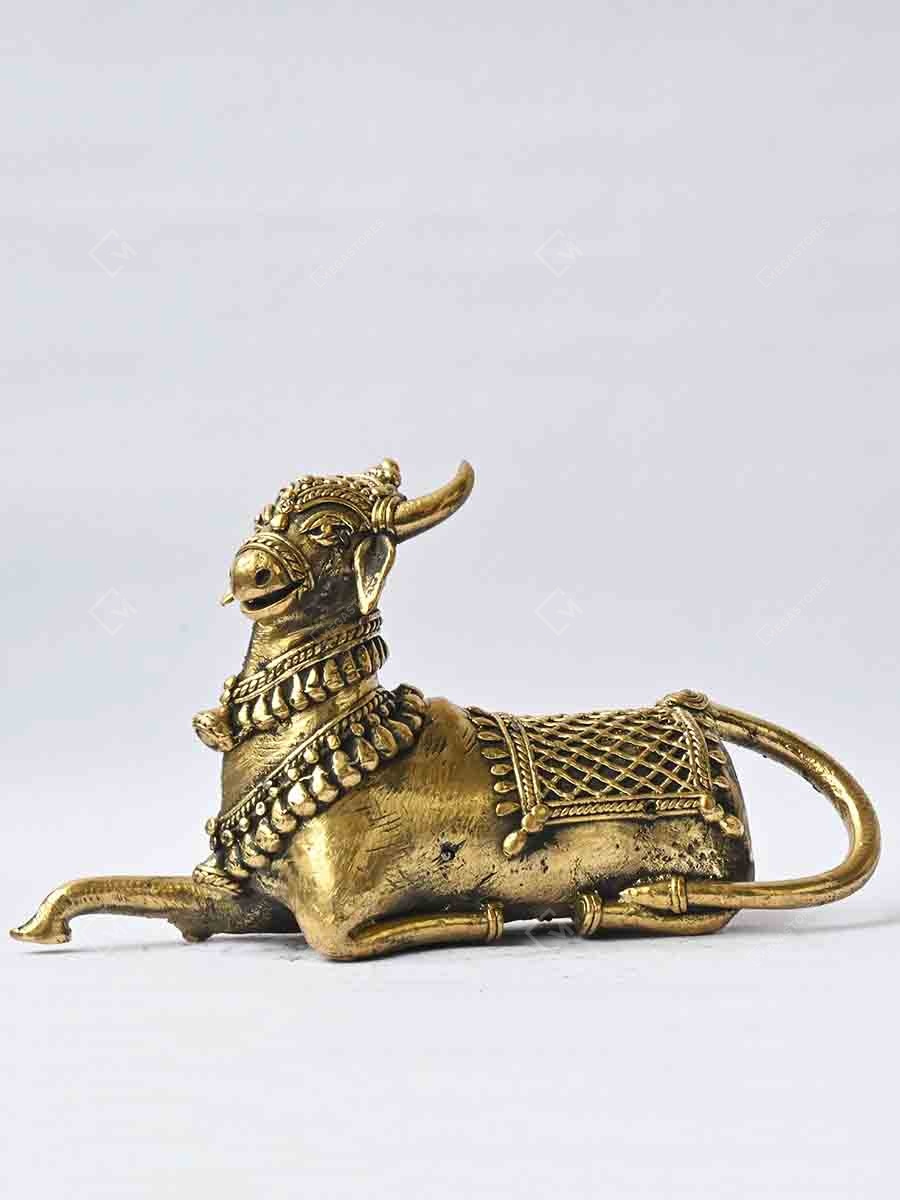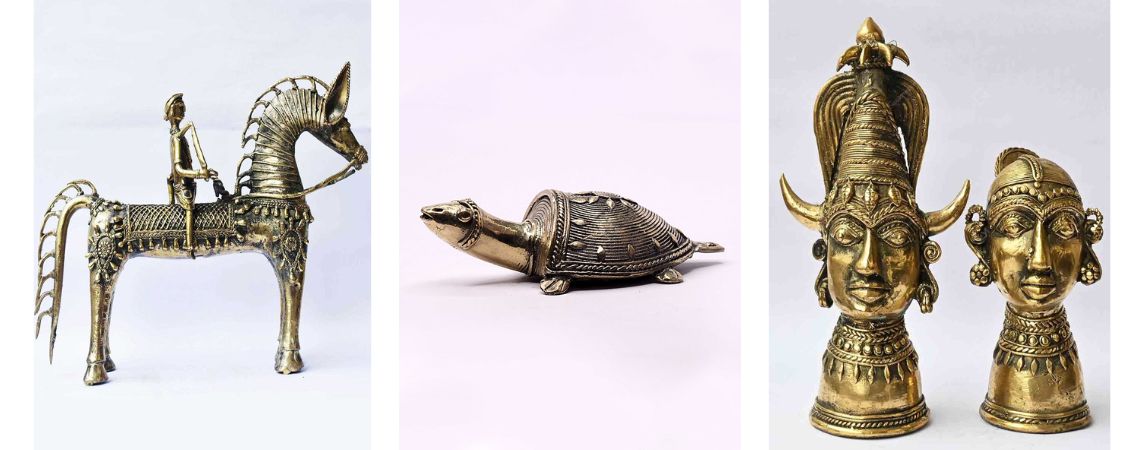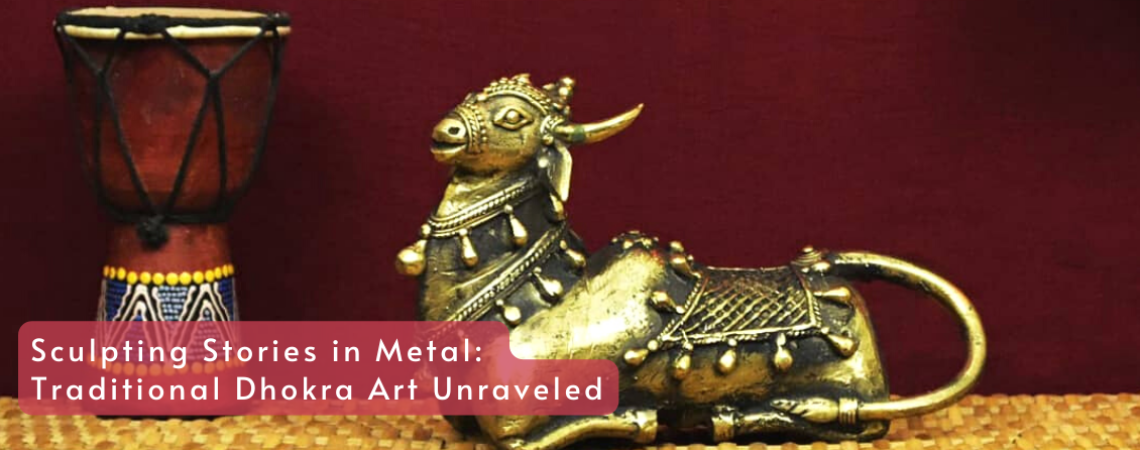Dhokra Art is a non-ferrous metal casting technique used in India for over 4,000 years. The lost-wax casting technique creates the metal castings, which are then polished and finished as desired. The Dhokra products are in great demand, both in domestic and foreign markets. This is due to their simplicity, and folk motifs.
The Dhokra horses, elephants, peacocks, owls, religious images, measuring bowls, and lamp caskets are highly appreciated. The lost wax technique for casting copper-based alloys has also been found in China, Egypt, Malaysia, Nigeria, Central America, and other places.

Dhokra Art Nandi
Dhokra art is influenced by tribal themes and stories about animals, mythical and human creatures, and nature. The product of Dhokra artisans is in great demand in domestic and foreign markets because of their primitive simplicity, enchanting folk motifs, and forceful form.
Dhokra art is the famous art of Bastar, Chhattisgarh, a state of east-central India, whose rich tradition of craft and culture has always attracted art lovers worldwide. Recently, Adilabad Dokra from Telangana got a Geographical Indicator tag in 2018.
The Dhokra metal casting technique is named after the Dhokra Damar tribes, who are the main traditional metalsmiths of West Bengal and Odisha. The tribe extends from Jharkhand to West Bengal and Odisha; members are distant cousins of the Chhattisgarh Dhokras. Dhokra, or Dokra from Dwariapur and Bikna, West Bengal, is also extremely popular. Dhokra art is one such attractive art form that is quite popular in the state of Madhya Pradesh. It is widely practiced in the Betul district by the local tribal community.
The process of creating Dhokra art involves the following steps:
Creating the clay core: The lost wax hollow casting process involves developing a clay core. This is the shape of the final cast image.
Covering the clay core with wax: The clay core is covered by a layer of wax composed of pure beeswax, resin from the tree Damara orientalis, and nut oil. The wax is then shaped and carved as per the design required.
Covering the wax with clay: The wax is then covered with layers of clay. This becomes a mold for the metal that will be poured inside it.
Melting the wax: Wax is melted by cooking and released through ducts.
Pouring the molten metal: The molten metal made from brass scrap is then poured in between the core and the inner surface of the mold. The metal takes the shape.
Removing the outer layer of clay: The outer layer is then chipped off. The metal icon is polished and finished as desired.
Watch the process video of Dhokra Art.
Being tribal Dhokra products render ethnic vibes through the stories they depict.
Some of the popular types of Dhokra art products that are used both as decor and for pooja are:

Horses: Dhokra horses are one of the most popular products.
Elephants: Dhokra elephants are another popular product.
Peacocks: Dhokra peacocks are a popular choice for home decor.
Owls: Dhokra owls are a popular choice for home decor.
Religious idols: Dhokra art also includes religious idols such as Lord Ganesha, Krishna, Nandi, Cow, Goddess Durga, and Lord Shiva.
Lamp caskets: Dhokra lamp caskets and tea light holders are a popular choice for home decor.
Human figurines: Madia Madin is a popular couple theme and symbolizes the special bond of love, faith, and trust between a couple
The Dhokra craft includes the blending of creative urges of the belief system of Hinduism. The craft imitates the primitive lifestyle of the Indic people. It has been passed down through generations. It is a witness to the creativity and skill of Indian artisans through which ancient stories are carried forward. The art form is aesthetically pleasing and has cultural and historical significance. I hope this blog has helped you understand the significance of Dhokra art. Don’t forget to explore a huge collection of Dhokra products here on Megastores.













